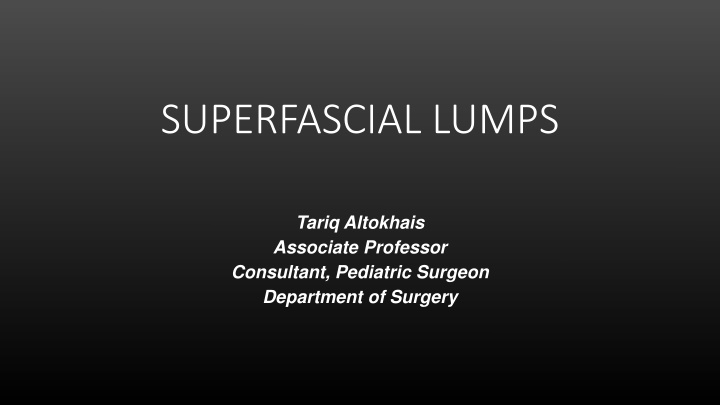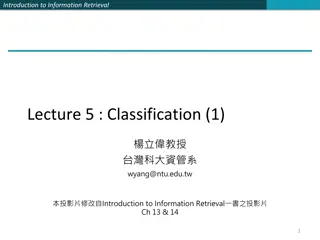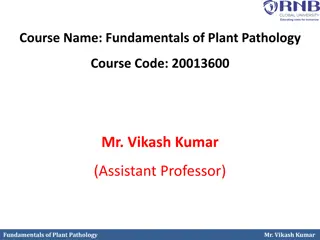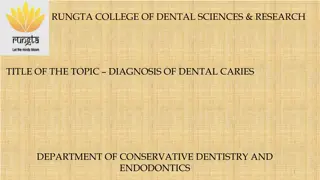Superfascial Lumps: Diagnosis and Classification
This comprehensive content provides insights into the identification, examination, and classification of superflacial lumps. It covers the history, examination procedures, classification (congenital and acquired), skin anatomy, scar formation (hypertrophic and keloid), along with detailed descriptions and images of various conditions related to superficial lumps.
Uploaded on Sep 16, 2024 | 1 Views
Download Presentation

Please find below an Image/Link to download the presentation.
The content on the website is provided AS IS for your information and personal use only. It may not be sold, licensed, or shared on other websites without obtaining consent from the author.If you encounter any issues during the download, it is possible that the publisher has removed the file from their server.
You are allowed to download the files provided on this website for personal or commercial use, subject to the condition that they are used lawfully. All files are the property of their respective owners.
The content on the website is provided AS IS for your information and personal use only. It may not be sold, licensed, or shared on other websites without obtaining consent from the author.
E N D
Presentation Transcript
SUPERFASCIAL LUMPS Tariq Altokhais Associate Professor Consultant, Pediatric Surgeon Department of Surgery
History of a lump or an ulcer History of a lump or an ulcer Duration (when was the first time noticed) First symptom (how the patient noticed it) Other symptoms Progression (change since notice) Persistence (has it ever disappear or healed) Any other lumps or ulcers Cause
Examination of a lump Examination of a lump Inspection: Shape Site Color Size Palpation: Temperature Tenderness Surface Edges Consistency Mobility Pulsation Compressibility Fluctuation Transillumination
Classification Classification Congenital Acquired: Infection Trauma Cystic Solid
Skin anatomy Skin anatomy Image result for skin Epidermis: openings of glands Papillary dermis: basal cell layer Dermis : contains sweat & sebaceous glands
Image result for hypertrophic scar Image result for hypertrophic scar
Scar Scar Fibrous tissue proliferation following : . Trauma . Surgery . Infection It is usually flat.
Hyper trophic scar Hyper trophic scar Excessive fibrous tissue in a scar Image result for hypertrophic scar . confined to the scar . no neovascularization .wound infection is an important factor .clinically it is a raised , non tender swelling with no itching .it may regress gradually in six months . does not usually recur after excision
Keloid Keloid Excessive fibrous and collagen tissue with neovascular proliferation in a scar. usually extends beyond the original scar keloid scar
Haemangioma Haemangioma
Papilloma Papilloma
Sebaceous Cyst Sebaceous Cyst
Dermoid Dermoid Clinical features: Painless, spherical,cystic mass. Appears in childhood or adults. Smooth surface. Not attached to skin No punctum Not compressible Trans-illumination test - ve .
Lymphatic Malformation Lymphatic Malformation
Lymphatic Malformation Lymphatic Malformation
Ganglion Ganglion























